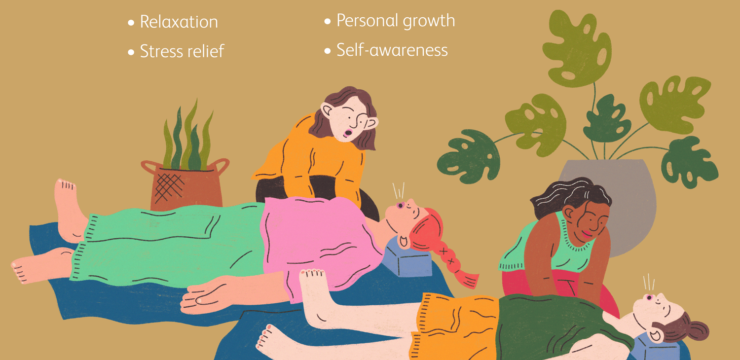We all know how vital sleep is to our overall health, but not all sleep is created equal. It’s not just about how many hours you get—it’s about the quality of those hours and the sleep cycles you move through each night. By understanding how sleep cycles work, you can optimize your rest, wake up feeling refreshed, and improve both your physical and mental well-being. Here’s how to hack your way to more restful nights.
What Are Sleep Cycles?
Sleep isn’t a uniform state—it’s a dynamic process consisting of multiple stages, collectively known as sleep cycles. Each cycle lasts about 90 to 120 minutes and repeats several times throughout the night. The two primary categories of sleep are Non-Rapid Eye Movement (NREM) sleep and Rapid Eye Movement (REM) sleep. Within these, there are four distinct stages:
- Stage 1 (Light Sleep): This is the transition phase between wakefulness and sleep, lasting just a few minutes. Your muscles relax, and your heart rate slows.
- Stage 2 (Deeper Light Sleep): Your body temperature drops, and brain activity slows down. This stage accounts for about 50% of your total sleep time.
- Stage 3 (Deep Sleep): This is the most restorative phase, where tissue repair occurs, the immune system strengthens, and growth hormones are released. It’s hard to wake up from deep sleep, and if you do, you’ll likely feel groggy.
- REM Sleep: This is when dreaming occurs. Your brain activity spikes, resembling wakefulness, while your body remains paralyzed to prevent you from acting out dreams. REM sleep is essential for memory consolidation and emotional processing.
Why Sleep Cycles Matter
Moving through complete sleep cycles is essential for feeling refreshed and energized. Waking up in the middle of a cycle, especially during deep sleep, can leave you feeling groggy and disoriented—a phenomenon known as sleep inertia. Conversely, waking up at the end of a cycle, particularly during light sleep or REM, helps you feel more alert and rested.
How Many Sleep Cycles Do You Need?
Most adults need between 4 to 6 complete sleep cycles per night, totaling 7 to 9 hours of sleep. However, the exact number varies depending on individual needs and lifestyle factors. The key is to ensure that your sleep is uninterrupted and that you’re completing full cycles for maximum restorative benefits.
Hacking Your Sleep Cycles for Better Rest
Optimizing your sleep doesn’t have to be complicated. By making a few strategic adjustments, you can align your sleep with your natural rhythms for better rest and recovery.
- Set a Consistent Sleep Schedule: Go to bed and wake up at the same time every day, even on weekends. Consistency helps regulate your circadian rhythm and ensures you move through sleep cycles smoothly.
- Calculate Your Ideal Sleep Time: Since each sleep cycle lasts about 90 minutes, aim to wake up at the end of a cycle rather than in the middle of one. For example, if you need to wake up at 7 AM, try falling asleep at 10:30 PM or midnight to complete 5 or 6 cycles.
- Create a Sleep-Friendly Environment: Keep your bedroom cool, dark, and quiet to promote uninterrupted sleep. Use blackout curtains, white noise machines, or earplugs if needed. A comfortable mattress and pillow can also make a significant difference.
- Limit Stimulants Before Bed: Avoid caffeine, alcohol, and heavy meals in the hours leading up to bedtime. These can disrupt your ability to fall into deep sleep and interfere with your sleep cycles.
- Wind Down with a Relaxing Routine: Engage in calming activities before bed, such as reading, meditating, or taking a warm bath. Reducing screen time at least an hour before bed can also help, as blue light from devices interferes with melatonin production.
- Track Your Sleep: Consider using a sleep tracker or app to monitor your sleep cycles and identify patterns. While not always 100% accurate, these tools can offer valuable insights into your sleep habits and help you make adjustments.
The Role of Naps in Sleep Cycles
Short naps can be a powerful tool for boosting energy and focus, but timing is key. A 20-minute nap keeps you in light sleep, helping you wake up refreshed. A 90-minute nap allows you to complete a full sleep cycle, providing deeper restoration without grogginess. Avoid naps longer than 20 minutes or shorter than 90 minutes to prevent waking up during deep sleep.
When to Seek Professional Help
If you consistently struggle with sleep despite making lifestyle changes, it may be time to consult a healthcare professional. Conditions like sleep apnea, insomnia, and restless leg syndrome can interfere with sleep cycles and require medical intervention. Don’t hesitate to seek help if you experience chronic fatigue, loud snoring, or difficulty staying asleep.
Final Thoughts
Understanding and optimizing your sleep cycles is one of the most effective ways to improve your overall health and well-being. By aligning your sleep habits with your body’s natural rhythms, you can enjoy more restful nights, wake up feeling refreshed, and tackle each day with renewed energy. Small changes can lead to big improvements—so start hacking your sleep cycles today for better rest and a healthier life.
What’s one change you’ll make tonight to improve your sleep?





